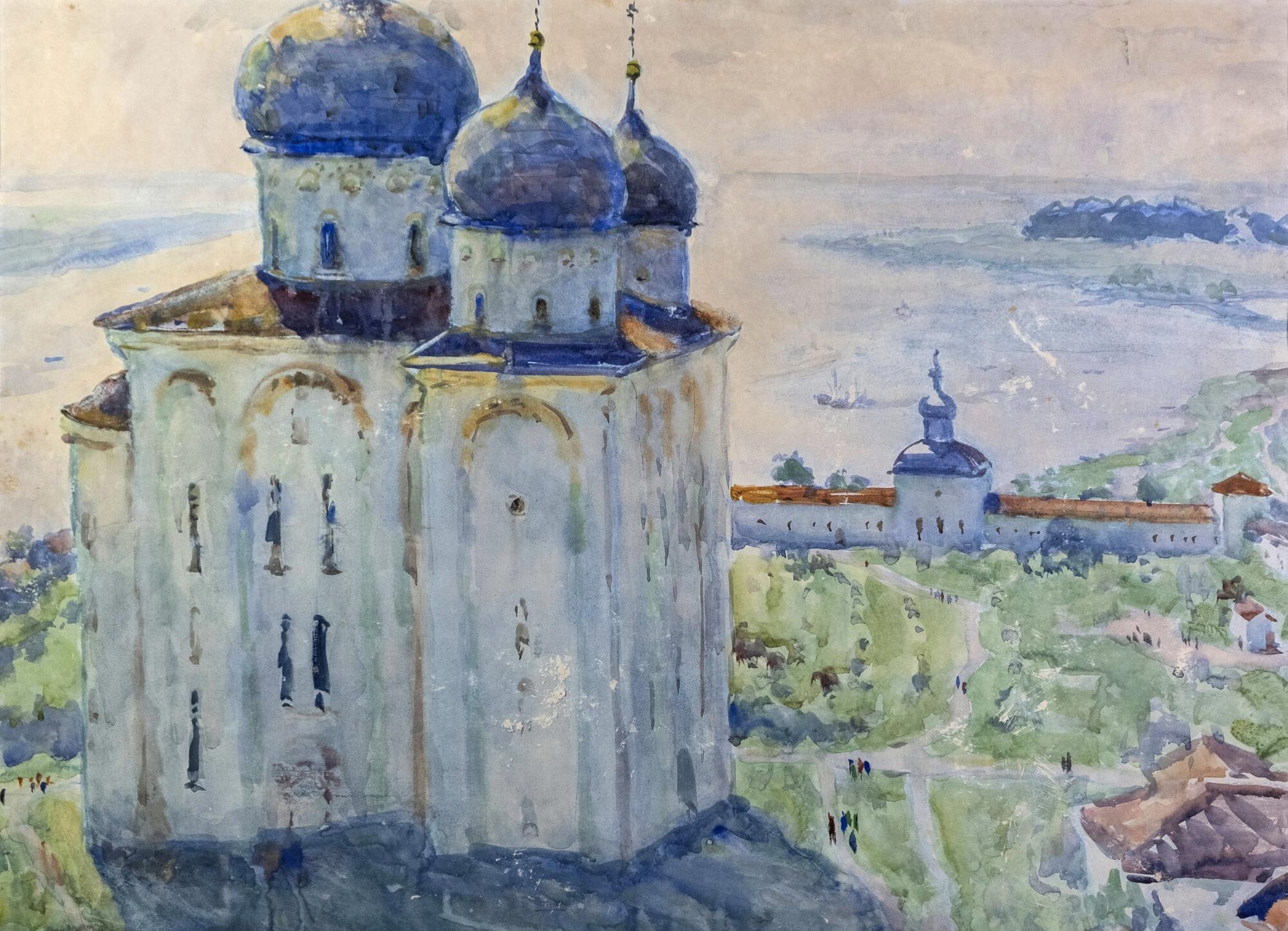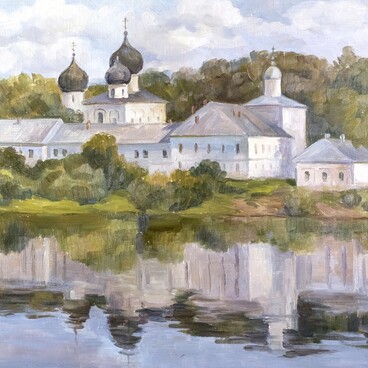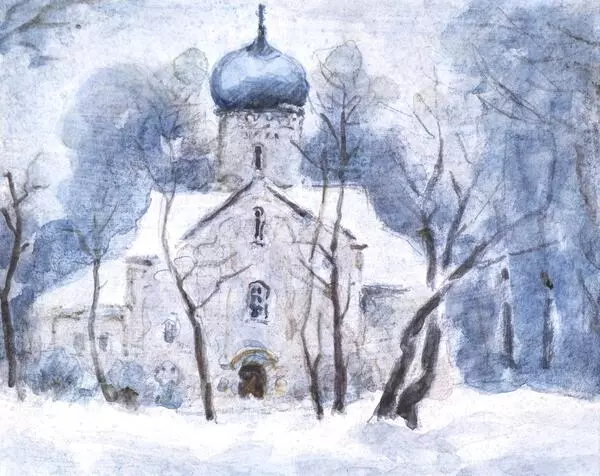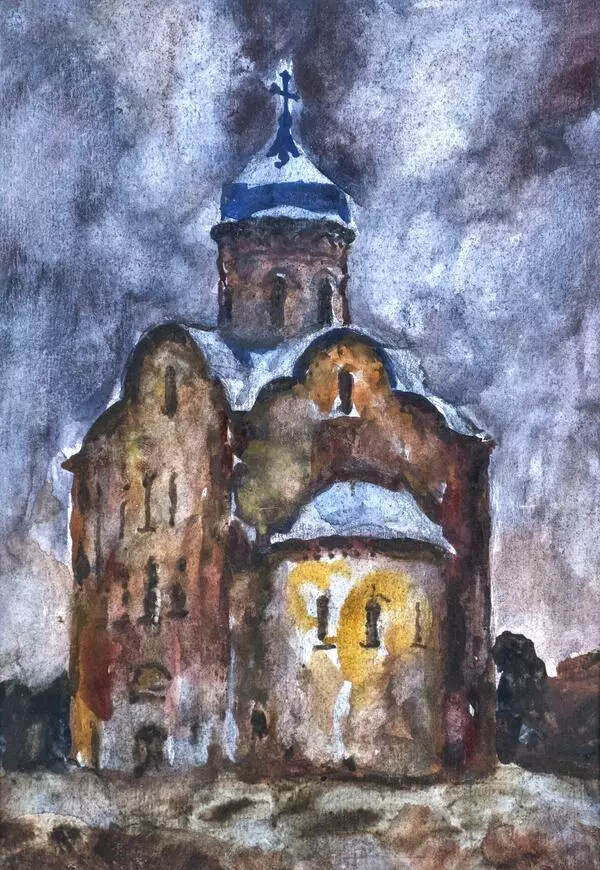The Yuriev Monastery (the St. George’s Monastery) stands at the mouth of the Volkhov River near the place where it flows out of Lake Ilmen. This is one of the oldest monasteries of the Novgorod Land, an architectural monument of the pre-Mongol period. The construction of its main cathedral, initiated by Grand Duke Mstislav I Vladimirovich, Vladimir Monomakh’s son, began in 1119. It took eleven years to build the cathedral. It is known that the master builder was called Pyotr, and Hegumen Kyuriak and Crown Prince Vsevolod Mstislavovich supervised the work. On July 12, 1130, Bishop John consecrated the church in the name of the Holy Martyr St. George. The lands donated by the prince helped the monastery become an influential religious institution. Many hegumens, princes and Novgorod posadniks (mayors) were buried on the territory of the monastery. In 1807, their stone coffins were found during renovation works.
In 1830, when the cathedral was restored, the original 12th-century frescoes were destroyed (few survived in the upper part of the staircase tower) and the walls were repainted. However, the new paintings were demolished during the next restoration (nowadays, the cathedral is decorated with frescoes created by the icon painter Nikolay Mikhailovich Sofonov).
A century later, the cathedral was largely destroyed and looted, and in 1991 it was returned to the congregation.
The architecture of the St. George’s Cathedral is considered the most well developed and perfect among other Novgorod monuments of that period. Mixed masonry includes rough-hewn Volkhov limestone and thin fired brick. In the western part there were matronea (galleries) for important people, including the princely family. The inner space of the second dome was reserved for the monks to pray together.
The presented watercolor was created by an Odessa artist, Semyon Ivanovich Pustovoytov. He entered the Odessa Secondary Art School in 1939, but did not have time to graduate because of the start of the Second World War. For a long time, the artist fought on the territory of the Novgorod region. After the war, having suffered a severe concussion, he continued his studies in Odessa, and then moved with his wife to live in Veliky Novgorod. He not only observed the revival of the city, but also participated in it as a restorer. Semyon Pustovoytov became famous for the watercolor series “Veliky Novgorod”, which included over 500 sheets.
In 1994, Semyon Ivanovich Pustovoytov was awarded the title of honorary citizen of Novgorod for his contribution “to the cultural and historical heritage” of the city.
In 1830, when the cathedral was restored, the original 12th-century frescoes were destroyed (few survived in the upper part of the staircase tower) and the walls were repainted. However, the new paintings were demolished during the next restoration (nowadays, the cathedral is decorated with frescoes created by the icon painter Nikolay Mikhailovich Sofonov).
A century later, the cathedral was largely destroyed and looted, and in 1991 it was returned to the congregation.
The architecture of the St. George’s Cathedral is considered the most well developed and perfect among other Novgorod monuments of that period. Mixed masonry includes rough-hewn Volkhov limestone and thin fired brick. In the western part there were matronea (galleries) for important people, including the princely family. The inner space of the second dome was reserved for the monks to pray together.
The presented watercolor was created by an Odessa artist, Semyon Ivanovich Pustovoytov. He entered the Odessa Secondary Art School in 1939, but did not have time to graduate because of the start of the Second World War. For a long time, the artist fought on the territory of the Novgorod region. After the war, having suffered a severe concussion, he continued his studies in Odessa, and then moved with his wife to live in Veliky Novgorod. He not only observed the revival of the city, but also participated in it as a restorer. Semyon Pustovoytov became famous for the watercolor series “Veliky Novgorod”, which included over 500 sheets.
In 1994, Semyon Ivanovich Pustovoytov was awarded the title of honorary citizen of Novgorod for his contribution “to the cultural and historical heritage” of the city.







